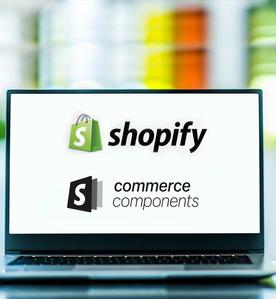11 Things to Consider when Selecting a Right Technology Stack
Sector: CMS Development, Digital Product, Technology
Author: Abhishek Singh
Date Published: 09/30/2021

Contents
- Structure of a Technology Stack for your Project
- 11 Things to Consider When Selecting a Technology Stack
- Collect technology knowledge
- Do market and industry research
- Define the project type, needs, and features for small-size, mid-size and large-size projects
- Freeze scope, advancements, and scalability
- Decide on the technology platform
- Check out team experience and expertise
- Consider project maintenance and sustenance
- Work out the cost of the project and tech stack
- Evaluate the speed and time to market
- Assess security measures
- Follow industry and marketplace trends
- Some Leading Tech Stacks
- Technology Stacks Backing Top Apps
- Wrapping Up: Deciding the Success of Your Project
What are the precise technology stacks and their implications to a project? And what should a non-technology project owner know about the technologies utilized in a project? You will get answers to all these queries in this post.
Technology stack is to software projects the same way construction materials are for a building. It is the set of coding languages, effective technology tools, and involved frameworks that a development team blends to form diverse web and mobile-based applications.
Furthermore, there are multiple layers involved in a “Tech Stack,” which encompass the usage of assorted programming codes, libraries, patterns, UI/UX components, technical elements, and hardware modules, subsequently founding a stack of numerous technologies.
There are many choices in the marketplaces; however, picking the off-beam language or framework might lead to severe challenges and problems.
However, there are a few significant and essential factors to reflect when selecting a tech stack for your technology project, which can swiftly help in narrowing down the on-hand options.
When developing a web application, it is always imperative for clients to get an outcome, and developers are concerned about discovering the ideal approach to achieve this outcome.
So, application success relies on many aspects. And a correctly designated technology stack is the most vital one.
In this blog, we will discuss in detail the most precise technology platforms for your projects and explore aspects of selecting a technology stack.
Structure of a Technology Stack for your Project
Apps have two software mechanisms, which comprise the client-side and server-side structure. They are also commonly called front-end and back-end.
Every layer of an application is crafted utilizing the functionalities and building a stack. The middleware works as a translation layer linking the front-end and back-end components.
1. The Frontend Technology Stack
The front-end is the explicit interface that facilitates users to engage with the application. Its key functionality is to deliver access and a pleasant user experience.
There are numerous technologies to utilize for front-end application development. There are three major front-end coding languages which include HTML, CSS & JavaScript, and multiple types of frameworks on JavaScript.
For Mobile
Mobile front-end technologies can be better characterized as Native, Hybrid, and Cross-platform. Native development is based on the usage of diverse coding languages, including Java, Kotlin, Objective-C, and Swift.
Hybrid app development is based on HTML5, Ionic, JavaScript, Cordova, Xamarin, and technologies like PhoneGap.
Coming to cross-platform mobile development, Xamarin, React Native, and Flutter platforms are the major ones in use. The use of these approaches allows different levels of technology controls and hardware access.
For Web
HTML is utilized for content-related placements with precise positioning and explicit ordering of web page contents.
Whereas HTML helps with the structuring of content, CSS is applied for the formatting of this content. This comprises enabling fonts, diverse colors, layout components, and web backgrounds.
JavaScript is frequently utilized as a scripting language to offer better engagement in web pages. There are multiple JavaScript libraries like Bootstrap, jQuery, and Slick.
They are enabled in precise frameworks such as Vue.js, Angular, and React.js for enhancing functionalities across the user interface.
2. The Backend Technology Stack
Back-end confirms that all functionalities and features are properly retorting to different user-based requests. It consists of coding languages, databases, server-side frameworks, operating systems, and a diverse range of APIs.
The back-end also supports the business logic, hosting, and deployments. Java and .Net are the distinctive illustrations of back-end stacks.
You can even select programming languages and frameworks from Python, PHP, Ruby on Rails, C++, C#, and more.
3. Middleware
Middleware works in the form of a hidden translation layer linking both front-end and back-end. It can effectively blend two or more applications, frameworks, and components for better interactions.
It includes application servers, web servers, content management systems (CMS), and technology tools that back application development and enable performance.
Meanwhile, you can easily get tips on hiring full-stack developers for your project from this blog post.
11 Things to Consider When Selecting a Technology Stack
1) Collect technology knowledge
In case you are a practiced professional in app development and worked on few fruitful products, you have some command on selecting the precise tech stack for your project.
However, this tactic doesn’t work soundly for non-tech-savvy professionals and may only lead to challenges in the coming time when chosen an erroneous development toolkit.
So, we endorse you to better elect for a proficient recommendation and advice by an expert not to get confronted later.
2) Do market and industry research
Prior to developing a product, it is quite significant to perform industry and market research. You should check out the information on project necessities. Or else, you would risk investing your efforts and time on an impractical project that will likely waste your funds in the end.
3) Define the project type, needs, and features
After you work on project necessities, you still have more investigation to make in picking your tech stack as per the project type and needs. You should inspect the project based on its intricacy, size, features, functions, and business objectives.
For instance, if your application encompasses parallel processing or necessitates low latency for healthier receptiveness, then you must reflect on the comparative tech stack that delivers such backing and support.
Small-Size Projects
They are frequently swift to complete due to straightforward requirements and can be executed with less multifaceted technologies such as WordPress in the case of web-based projects.
Mid-Size Projects
They involve a superior level of technological assurance. They may call for the usage of numerous blends of coding languages and modern tools requiring advanced platforms. Such projects need technologies that offer more varied functionalities and the incorporation of competent features.
Large-Size and Multifaceted Projects
If you are exploring or looking to build an online marketplace, customer relationship management software, or order processing solution, then you are dealing with a multifaceted project.
A blend of a multitude of coding languages is expected for such complex projects. This can be similar to a mid-size project but with more composite functions and features.
You necessitate multiple integrations and added precision across the project; so, your technology stack requires to be superior and advanced.
So, the more big-sized and complex the project is, the more advanced tech stack would be needed. For instance, small projects or MVP will require stacks like Node.js-React or Python-Django.
Medium-size projects would need tech stacks with multiple layers of languages and precise frameworks.
On the other hand, the large enterprise applications would need a bigger technical stack and highly progressive features to sustain the project’s authenticity and performance levels.
4) Freeze scope, advancements, and scalability
Small-scale projects require limited scope and advancements. They are usually quicker to deliver and do not inevitably necessitate cutting-edge frameworks.
You might essentially build up a minimum viable product (MVP), showcase it to the client, and get swift feedback to move forward.
For mid-size projects, there is a superior level of scope and technological advancements. Such projects need forward-thinking technologies and elegant functionalities. So, the tech stack must be of a higher and superior level.
If you plan for speedy growth and maturity, ensure you don’t overlook that the tech stack you utilize should have the latent to scale adequately.
Not all technology stacks may have sufficient likelihood to scale with precise advancements. You can either enhance vertically by the addition of innovative functionalities or scale horizontally through added processing units linked to your explicit server.
5) Decide on the technology platform
What are the potentials of the technology platform for your project? Without thoughtful consideration and expectation from the project, deciding on a tech stack or platform is a pointless move.
At this step, you should identify your target audience’s likes and dislikes. How they will approach and utilize your application. What is the prevalent and active device amongst them? Is it a PC or a smartphone?
For example, a web app needs a completely diverse set of frameworks and tools when matched to a mobile application. Even inside mobile apps, the technology stacks you require for iOS and Android are dissimilar.
You should then strategize depending on your options and decide on the technology platforms. You should pick the best technology platform to apply to your project.
However, remember if you are enabling an MVP first, choose the most effective and popular platform across your target customers. This scenario will help you save on the software development costs later, and you can better receive precise feedback right in advance.
6) Check out team experience and expertise
It is obligatory to have in-depth technical and architectural know-how for choosing a tech stack. For picking the technologies adeptly, it is required to know all the gains, limitations, and major differences between them.
Consequently, when enabling tech stacks, it is valuable to give priorities to those technologies with which your team has experience and expertise.
You should not elect a new technology as all are trying it, as many times new frameworks and coding languages are moreover raw or practiced developers on these technologies are not easily accessible.
So, selecting such new technologies can lead to scenarios where your experienced developers would waste their time exploring these technologies rather than advancing successfully.
However, don’t decide on some technologies that are out-of-date and unproductive. In such scenarios, complexities may arise with the efficiency and support of the project.
Additionally, it is significant to consider the accessibility of resources for the execution of the project. For instance, if your team does not have an expert working with a specific technology, adding it to the project makes no logic.
The striking technology stack does not carry any advantages if there are no developers who can effectively and speedily work with the chosen technologies.
7) Consider project maintenance and sustenance
You require to comprehend that your team must be able to maintain and sustain the developed app after it is successfully released.
This is the subsequent stage after the app development, and it is correlated to your preference of technology stack too.
Present Codebase
Your selection of tech stack should be in line with your present codebase and software architecture if you want viable sustenance. Try picking programming languages that are efficient, highly reusable, and straightforward to maintain.
Your codebase should be modest and of normal length, which further assists while reviewing, debugging, and enabling the involved codes by your development team.
Enabled Software Architecture
Software architecture is a crucial player for empowering the compactness, scalability, and reusability of apps. Your preference of technology stack should be directed and compatible with your precise software architecture.
Grounded on this, you should contemplate technologies that facilitate static and dynamic element configurations. It makes the app performance flawless, even when there is an increase in users base or you add more advanced functionalities.
8) Work out the cost of the project and tech stack
There are many open-source IT frameworks and free tools that are effectively applied by companies. However, subscription fees are charged if you require unique or special features.
You might essentially need to pay for standard licensing, and there is also a maintenance cost involved. The preference of the technology stack depends on all these aspects.
Additionally, some tech stacks mandate higher salaries for their development professionals, so you require to comprehend that too.
You might also have to comprehend the professional training costs needed for your developers for a specific technology if it is an involved possibility.
The dispute is amid the total cost of utilizing a technology stack and the superior usefulness of its functionalities.
9) Evaluate the speed and time to market
A minimum viable product is an effective choice when you require to introduce your new project or features swiftly. You may want to commence with ready solutions to diminish the time you invest for your foremost entry in the applicable marketplace.
For example, you can save much time and effort by utilizing the Ruby on Rails framework that offers quick access to fundamental libraries.
You can add fresh functionalities to your application through 3rd-party integrations and evade having to program from initiation. Also, precisely documented technologies can effectively enable the development of certain features.
10) Assess security measures
It is pretty vital to make sure that the application is developed with the professional practices of safety and security to reduce the possibilities of potential threats. To eradicate frequent security threats, you may require to run security tests on the client and server ends.
Not all tools are safe, likewise, so you require prerequisites to consider your optimal preferences before initiating development procedures.
11) Follow industry and marketplace trends
It is effective to follow the newest development trends and keep monitoring the involved events to craft an advanced solution blended with added systems and platforms.
Moreover, if a community backs your technology stack tools, you will receive greater assistance when you deal with some challenges or issues.
Some Leading Tech Stacks
In this quick-paced space of modern business and technology, it would be irrational not to offer ready technology stack solutions that swiftly enable the operations and save the time of application developers. Let’s explore some of them.
1) .NET Stack
.NET framework is a significant technology stack with 60+ frameworks, platforms, libraries, and SOA, to name some of them.
If you wish for an active and engaging web application, then you should opt for .NET, which is a highly utilized and reliable framework.
You can utilize .NET with other open-source technologies to craft efficient server-side apps and enterprise systems. This particular stack is pretty competent as a comprehensive technology platform for all categories of front-end components as well as varied databases.
The runtime for .NET apps is incredibly swift; still, it is simple to develop, allowing development teams to meet set project deadlines.
Precise interoperability with numerous platforms makes space for a variety of innovative features to be crafted by a web developer. .NET can be ported effortlessly, so development teams can select any of the frameworks to work on a project. It also enables web developers to work with other programming languages.
2) LAMP Stack
The LAMP stack is a prevalent open-source software set. This technology stack comprises PHP, the Apache HTTP Server, the Linux OS, and the MySQL database.
LAMP is technically reliable and has been used for a very long time. It even blends with Python and Perl as stand-ins for the PHP programming language.
Development teams utilize it as it is perfect for dynamic web portals and apps. The grouping of the LAMP stack with other open-source programs enhances it and offers better interoperability.
3) MEAN Stack
MEAN stack is an effective open-source software set utilized by JavaScript development teams for creating dynamic applications and web portals. It is an ideal preference for building robust and scalable applications.
The stack is enabled by support programs prepared and written in JavaScript, which makes it simple for the development of apps for client-side and server-side environments.
The development professionals working on the client-side are benefitted as they can access and understand the programming of the server-side environment.
MEAN stack backs the MVC pattern, and it is highly mobile-friendly with interoperability offered by AngularJS.
It also enables the transfer of data sets by utilizing NoSQL’s native JSON and offers accessibility to the explicit Node.js JavaScript module library.
4) MERN Stack
The MERN model completely encloses the diverse development processes from client to server, similar to the MEAN stack.
With the utilization of ReactJS in enhancing the front-end and NodeJS in augmenting the back-end, this blend of technologies is mainly applied in the eCommerce development projects.
5) MEVN Stack
The MEVN model is an extended branch of the MEAN stack, wherein Vue.js. is applied in place of Angular. Vue.js includes the benefits of both React and Angular technologies.
It offers and enables better performance, enhanced programming style, and possesses a set of valuable technology tools.
All the models revealed above are perfectly enabled ready solutions for medium-size and large-scale development projects.
Technology Stacks Backing Top Apps
Most of the leading companies have expressed that their success more or less relied on the selection of their technology stack.
Some even made drastic transformations matched to when they initiated by altering or adding to the technology functionalities they apply.
Here we have mentioned the significant technologies some leading and popular organizations use.
1. Airbnb Technology Stack
- Programming languages: Ruby and JavaScript
- Server: Nginx
- Databases: Hadoop, Redis, MySQL, and Amazon
- Server-side framework: Rails
2. Spotify Technology Stack
- Programming languages: Python, Java, and Bootstrap
- Server: Nginx
- Databases: PostgreSQL and Cassandra
- Server-side framework: Django
3. Facebook Technology Stack
- Programming languages: PHP, Hack, and GraphQL
- Server: Custom
- Databases: Memcached, RocksDB, Cassandra, and Beringei
- Framework: Tornado
4. Shopify Technology Stack
- Programming languages: GO and Ruby
- Server: Nginx
- Databases: MySQL, Hadoop, and Redis
- Framework: Rails
5. Uber Technology Stack
- Programming languages: GO, Python, Java, and Objective-C
- Server: Nginx
- Databases: PostgreSQL, MySQL, MongoDB and Redis
- Framework: Apache Thrift and Node.js
6. Pinterest Technology Stack
Selecting the precise technology relies on the project needs and skillsets of a development team that will build it, even if funds are not a challenging aspect. This decision-making can make or break your app development project.
You should research and identify a similar category of products to what you comprehend to build for discovering how they were crafted.
You can have a consultation or hire a development team to decide which tools and frameworks would work best for your technology project.
Techtic, as a leading full-stack development company, will be pleased to offer you technology consultations and help you with your software development initiatives.
Sometimes, proven technologies and methodologies may not be sufficient, as you require to be highly realistic and understand the involved positives and negative aspects.
So, we will recommend to you the most precise technology stack that entirely assures the successful delivery of your project in a timely manner.
Furthermore, our development teams can swiftly assess the needs of your project and build a scalable application that will beat the competition. So, get in touch with us to build a highly proficient web or mobile application.
Latest Tech Insights!
Join our newsletter for the latest updates, tips, and trends.







